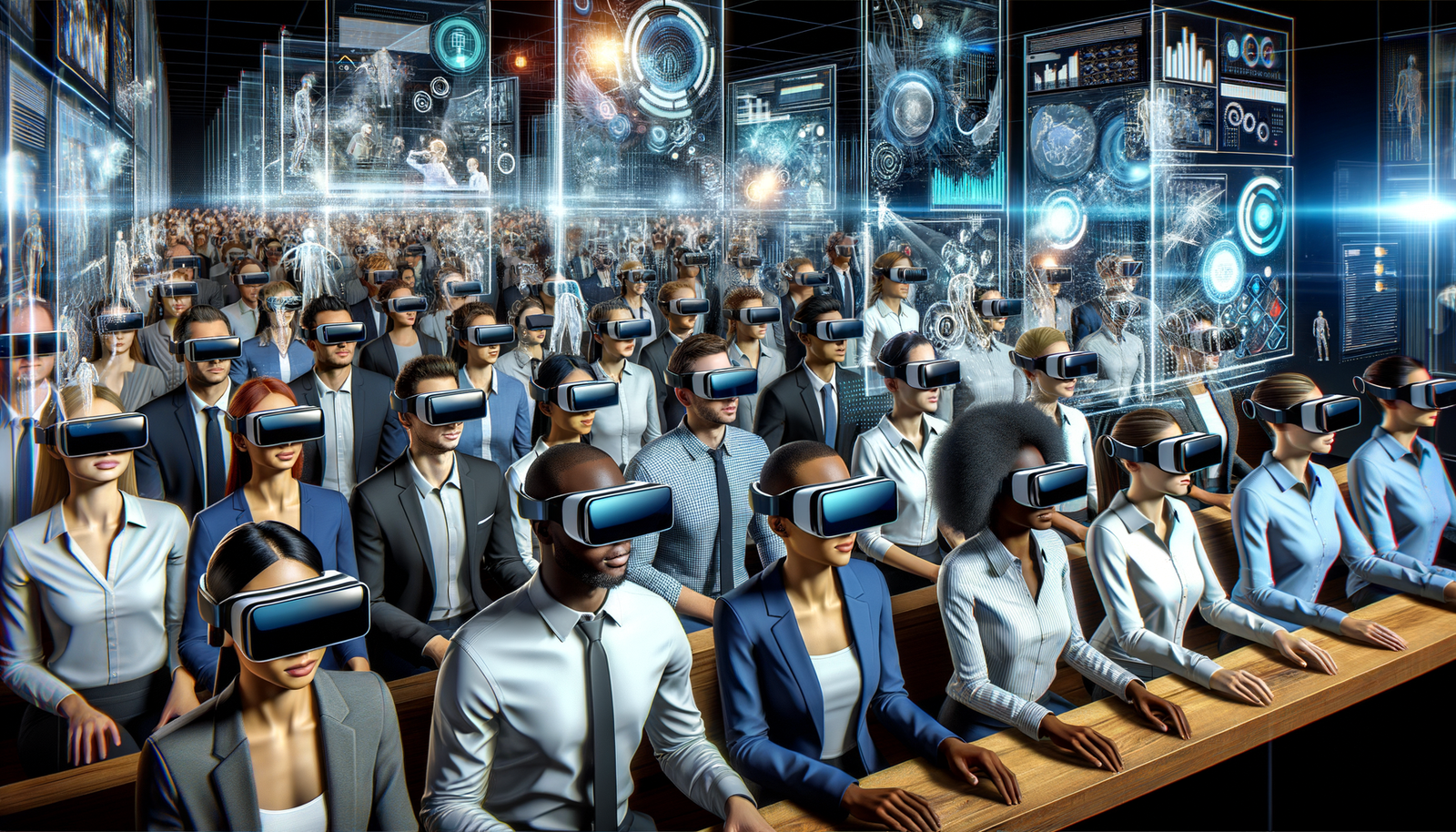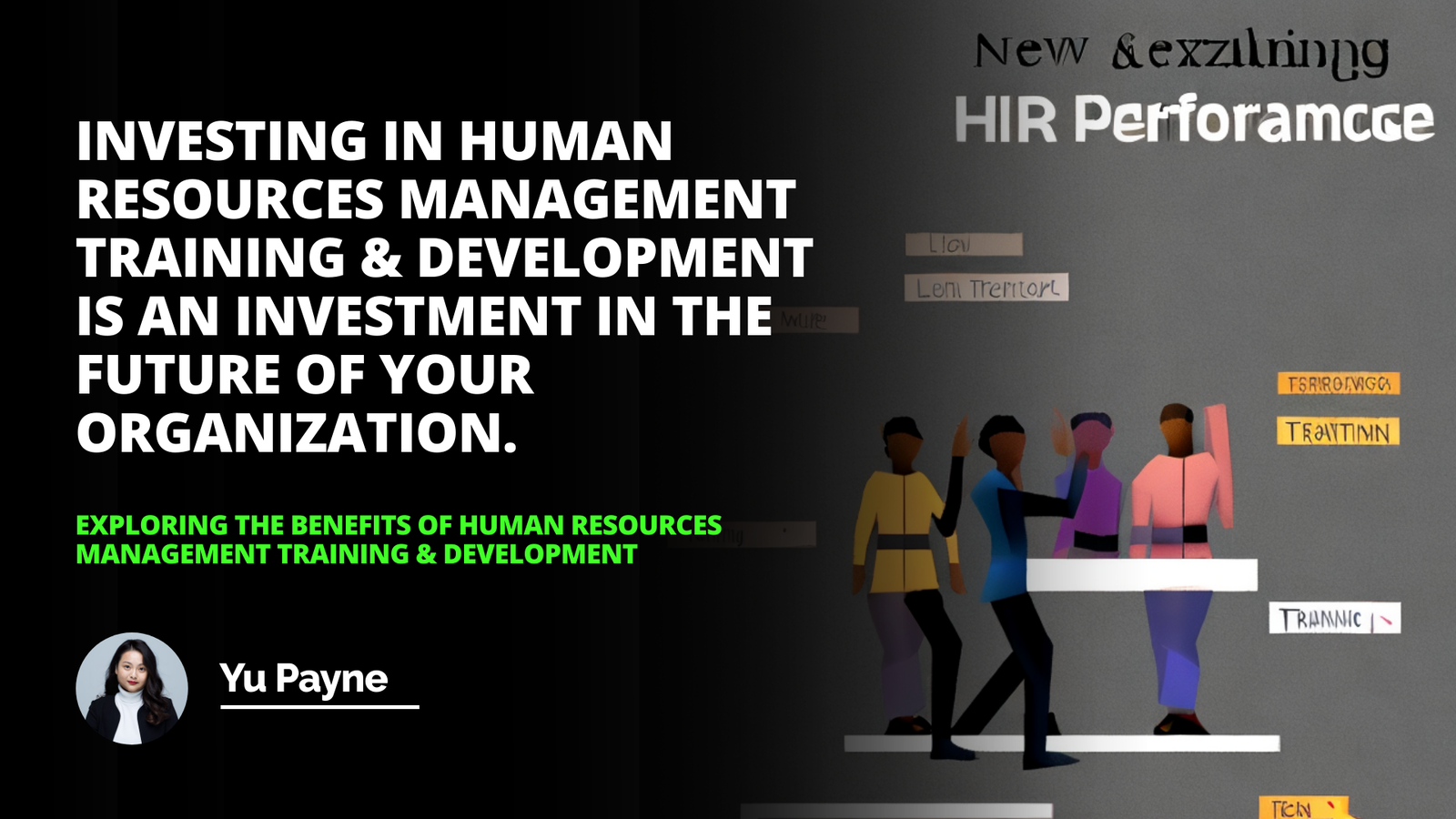
In the realm of human resources, the facilitation and resolution of workplace disputes are of paramount importance. HR Mediation serves as a critical function in managing such conflicts effectively, striving to achieve amicable resolutions that are aligned with the best interests of both the individuals involved and the organization. This experiential article delves into the nuanced art of HR mediation, considering its history, roles, processes, and the skills imperative for delivering successful outcomes.
Furthermore, the topic explores the benefits and limitations of this approach and the future of HR mediation in an era increasingly influenced by technological advancements. Through a blend of comprehensive knowledge, an expert approach, and real-life examples, the following sections offer a user-oriented exploration of HR Mediation and its significant influence on fostering harmonious workplace dynamics.
Understanding the concept of HR Mediation
HR Mediation encompasses a range of practices aimed at addressing and resolving conflicts within an organizational context. The process involves a neutral third-party mediator who assists the disputing parties in reaching a voluntary, mutually agreeable settlement. The importance of HR mediation is rooted in its ability to provide a confidential and structured environment wherein employees can openly discuss issues, air grievances, and work towards a resolution without resorting to formal litigation.
The efficacy of HR mediation stems from its proactive nature, allowing for the de-escalation of potential disputes before they fester into larger problems. A harmonious workplace environment is imperative for productivity, and HR mediation directly contributes to maintaining a climate of cooperation and mutual respect. By encouraging dialogue and understanding, mediation plays a key role in preventing the deterioration of professional relationships and avoiding the costs associated with workplace discord.
Tracing the origins of HR mediation, one can find its principles in the larger context of conflict resolution history. Although the concept is far from new, with roots in both ancient and modern systems of justice and organizational theory, its adaptation to the corporate milieu has been a more recent development. Over time, HR practitioners have recognized the value of mediation as a more humanistic and less adversarial alternative to traditional grievance mechanisms. This has led to a pivotal shift in the role of HR professionals, positioning them as not only administrative enforcers but also as facilitators of employee well-being and organizational harmony.
The Role of HR Mediation in conflict resolution
Delving deeper into the responsibilities of HR mediators, it is essential to underscore their role as catalysts in the resolution process. It is incumbent upon them to assess the nature of the dispute, the dynamics between the parties involved, and the potential impact on the wider organization. HR mediators must carefully navigate the complexities of interpersonal relationships while maintaining confidentiality, fostering trust, and facilitating a process that empowers the parties to articulate their concerns and negotiate effectively.
HR mediation significantly contributes to maintaining a positive work environment. When employees know that their voices can be heard and problems can be addressed through a well-established mediation process, a sense of security and inclusivity is reinforced. This, in turn, builds a culture of openness and trust, which is critical in any organizational climate. The ability of mediation to divert the course of conflicts from disruptive outcomes to constructive resolutions reinforces its strategic importance within the HR domain.
Linking HR mediation to an organization's productivity underlines the practical implications of conflict resolution. Resolved disputes equate to less time away from work, a reduction in employee attrition rates, and a preservation of institutional knowledge. Moreover, the efficacy of mediation in resolving conflict may have a restorative effect on the parties involved, leading to enhanced collaboration, renewed commitment, and an overall boost in productivity. Therefore, HR mediation is not a soft skill but a strategic function that translates directly into tangible benefits for the organization.
The Process of HR Mediation
The initial stage of HR mediation begins with the identification of the conflict. This is often the most challenging part, as conflicts in the workplace can be subtle and manifest in multiple ways. HR professionals must be vigilant and responsive to any indicators of dissent, be it in reduced performance, changes in employee behavior, or direct complaints. Drawing out these issues requires both tact and a proactive approach to communication.
Transitioning to the pre-mediation stage, HR mediators perform a critical role in gathering all relevant information. This involves conducting individual meetings with the parties involved to understand their perspectives, delineating the conflict's scope, and setting the ground rules for the mediation process. Preparation is key to ensuring that the structured discussions to follow will be productive and focused on resolution rather than further conflict.
During the mediation stage, the HR mediator facilitates dialogue, guiding the parties through collaborative brainstorming and negotiation. This stage hinges on the skills of the mediator to remain impartial while encouraging transparency and empathy. The goal is to help both parties converge on a solution that they can agree to and uphold. Real-life examples from successful mediations highlight the transformative potential of this process, demonstrating how even long-standing disputes can find closure through facilitated dialogue and cooperative problem-solving.
The post-mediation stage involves the implementation of the agreements reached during the mediation. Ensuring that these agreements are executed requires diligent follow-up and support from HR mediators to guarantee adherence and address any emerging issues. It's in this phase that the true resolution takes shape as teams rebuild and individuals reflect on the growth and understanding achieved through the mediation process.
Essential Skills of an Effective HR Mediator
An effective HR mediator must exhibit impartiality and neutrality. This forms the cornerstone of their credibility and the trust they can instill in the dispute resolution process. Without these core values, the integrity of the mediation could be compromised and any resolution reached could be questioned for fairness.
Excellent communication is another vital skill for HR mediators. This extends beyond articulate speech and encompasses the ability to listen actively, interpret non-verbal cues, ask insightful questions, and facilitate a dialogue that moves parties towards resolution. The mediator's communication prowess can often determine the success or failure of a mediation session.
The problem-solving aptitude of HR mediators can't be overstated. They must possess creative and critical thinking skills that allow them to identify the roots of conflicts, analyze the perspectives of each party, and help in crafting innovative solutions that respect the interests of the parties involved. Combining these with a deep emotional intelligence—the capacity to understand and manage one's own emotions and the emotions of others—enables HR mediators to navigate the high-stress environment of conflict resolution with compassion and effectiveness.
The Benefits and Limitations of HR Mediation
HR mediation offers a plethora of advantages to organizations, including the preservation of workplace relationships, the reduction of formal dispute resolution costs, and the fostering of a culture that values constructive conflict management. Employees who feel heard and validated are more likely to be engaged, loyal, and efficacious in their roles. The benefits also extend to the HR function itself, which can demonstrate its strategic value to the organization through successful mediations.
However, it's also critical to acknowledge the potential downsides and challenges of the mediation process. One limitation is that not all conflicts are suitable for mediation, particularly those involving allegations of harassment or legal breaches. Additionally, without full buy-in from all parties, mediation can falter, resulting in unresolved disputes and potential escalation.
To illustrate these points, real-life examples of when mediation has been successfully applied can provide powerful narratives of conflict transformation. Conversely, case studies of when mediation has failed can serve as instructive cautionary tales, highlighting the need for sound judgment and the ability to recognize the limits of the mediation approach.
The Future of HR Mediation: Technology and Mediation
The integration of technology in HR mediation opens up new frontiers. Digital platforms can facilitate remote mediations, making it more accessible to dispersed teams and offering additional convenience. Furthermore, the potential impact of AI and machine learning on HR mediation could revolutionize the field by providing predictive analytics and helping mediators understand the patterns and probabilities of conflict resolution.
Despite the promise technology holds, it also introduces challenges. Issues such as algorithm bias, privacy concerns, and the loss of the human touch in dispute resolution must be thoughtfully considered. As technology evolves, maintaining the delicate balance between tech-assisted efficiency and the need for personalized, empathetic mediation will be of the essence.
Conclusion
In summation, HR mediation stands as a vital component in the navigation of workplace disputes, with a direct impact on the health of organizational culture, employee satisfaction, and company productivity. As this article has examined through insightful discourse, a comprehensive understanding of mediation's roles, processes, and skills is essential for any HR practitioner seeking to master this craft. Looking ahead, the fusion of technology with traditional mediation practices offers exciting opportunities to enhance this indispensable HR function. In a constantly evolving workplace landscape, the insights and discussions contained herein highlight the ongoing importance and development of HR Mediation as a central tenet of effective human resource management.
Frequently Asked Questions
What are the key principles that underpin the practice of HR mediation in dispute resolution at workplaces?
Understanding HR Mediation
Human Resources (HR) mediation is central to resolving workplace disputes. It fosters dialogue between conflicting parties. Professionals apply several core principles in this process.
Impartiality
Impartiality remains critical. Mediators must remain neutral. They avoid showing bias. Their role includes facilitating conversation, not taking sides.
Confidentiality
Confidentiality is essential. Mediation discussions require privacy. Participants must feel safe sharing information. Trust depends on guaranteed secrecy.
Voluntariness
Participation is voluntary. Parties choose to engage in mediation. No one forces them. This principle respects individual autonomy.
Self-Responsibility
Self-responsibility empowers employees. They control outcome decisions. Mediators guide discussions but don't dictate terms.
Informed Decision Making
Informed decision-making is key. Parties should understand their choices. Mediators provide necessary information. Employees must comprehend possible consequences.
Future Focus
Mediation looks forward. The goal is constructive solutions. Parties work towards collaboration, not dwelling on past conflicts.
Problem-Solving Approach
A problem-solving approach is central. Mediators encourage creative thinking. Solutions should benefit all involved. The focus is on resolving the issue, not assigning blame.

How can HR professionals maintain impartiality during workplace conflict mediation?
Maintaining Impartiality in Conflict Mediation
Understand the Importance of Neutrality
HR professionals ensure fair treatment. Each employee deserves an unbiased mediator. Neutrality is paramount in HR roles. Preconceived notions must stay aside. Impartiality upholds trust and integrity. It promotes a just workplace.
Develop Active Listening Skills
Active listening fosters understanding. It involves full concentration and reflection. Listen more, speak less. Encourage open dialogue. Clarify points when necessary. Summarize the discussion's key aspects. Withhold judgment while listening. Validate every perspective fairly.
Create an Open Dialogue Framework
Structure mediates effective discussions. Set clear guidelines initially. Rules should apply to all. An open framework encourages participation. Everyone must feel heard. Procedures should be transparent. This maintains an equitable environment.
Hold Accountability
Accountability pertains to mediators too. HR professionals answer for their actions. They must remain objective throughout. Personal biases should not influence mediation. Uphold professional standards at all times.
Pursue Continuous Education
Knowledge expansion is crucial. Embrace learning opportunities. Training enhances mediation techniques. Learning helps to recognize biases. Better skills lead to better mediation outcomes.
Reinforce Ethical Standards
Ethical codes provide direction. They emphasize fair practices. HR should adhere to these principles. The codes offer guidance during conflict.
Avoid Dual Relationships
Professional boundaries are necessary. Avoid relationships that could impair impartiality. Friendships may create conflicts of interest. They might hinder objective decision-making. Ensure a professional distance always.
Utilize a Mediation Checklist
Mediation checklists ensure consistency. They contain key steps to follow. This tool aids in remaining impartial. It helps track the mediation process.
Reflect on Personal Bias
Self-reflection is critical. Acknowledge your own biases. Understanding them helps mitigate their impact. Reflection leads to more balanced mediation.
Seek Feedback
Feedback aids in improvement. Colleagues can offer valuable insights. They can point out areas lacking impartiality. Use this input to adjust practices.
Engage Co-Mediators
Two mediators can balance each other. Co-mediation can promote impartiality. It ensures one view doesn't dominate. Multiple perspectives enrich the mediation process.
To conclude, HR professionals face the delicate task of mediating workplace conflicts impartially. By valuing neutrality, practicing active listening, establishing a framework for open dialogue, upholding ethical standards, avoiding dual relationships, and continually striving for personal and professional growth, they can effectively navigate through conflicts. Implementing these strategies helps HR professionals maintain the integrity of the mediation process, fostering a fair and just workplace environment for all involved.

What strategies can HR utilize in mitigating prolonged conflicts in the workplace and promote a more harmonious work environment?
Understanding Workplace Conflicts
Workplace conflicts are inevitable. They stem from diverse origins. Individual differences often trigger discord. Understandably, such conflicts harm productivity. They also affect employee morale negatively. HR professionals seek harmony in teams. They strive for optimized work environments. Their approach must be proactive. Prevention is preferable to correction.
Key Strategies for HR Professionals
Foster Open Communication
Encourage open dialogues. Create safe spaces for expression. Transparency builds trust. Regular check-ins can be helpful. Use these to gauge employee sentiments.
Set Clear Expectations
Clearly define roles and responsibilities. Misunderstandings often fuel conflicts. Ambiguity should have no place. Clarity in expectations avoids unnecessary friction.
Provide Conflict Resolution Training
Equip employees with resolution skills. Training sessions can be invaluable. They foster understanding and empathy. Skills in negotiation and active listening are crucial. These promote effective conflict management.
Implement Fair Policies
Fairness is essential. Develop impartial policies for all. This reduces perceptions of favoritism. Everyone should feel equally valued.
Promote Team Bonding Activities
Team bonding strengthens relationships. Organize regular team-building events. These activities build camaraderie. They also improve communication among team members.
Offer Mediation and Support
Sometimes conflicts do escalate. Offer mediation services when this happens. Impartial mediators can help resolve disputes. Provide access to counseling if necessary.
Monitor and Address Conflicts Early
Do not ignore emerging tensions. Address issues before they grow. Early intervention prevents escalation. It facilitates faster resolutions.
Encourage a Culture of Respect
Respect is fundamental. Advocate for a respectful work culture. Disrespect should not be tolerated. A culture of respect minimizes conflicts.
Review and Adapt
Regularly assess the effectiveness of strategies. Adjustments may be necessary. Adapt to the unique needs of your organization.
Conclusion
HR holds a pivotal role. They manage and mitigate conflicts. A harmonious workplace is the goal. These strategies can guide HR professionals. They can help create a balanced, productive environment. Implement these strategies with care. Watch the work atmosphere transform positively.



